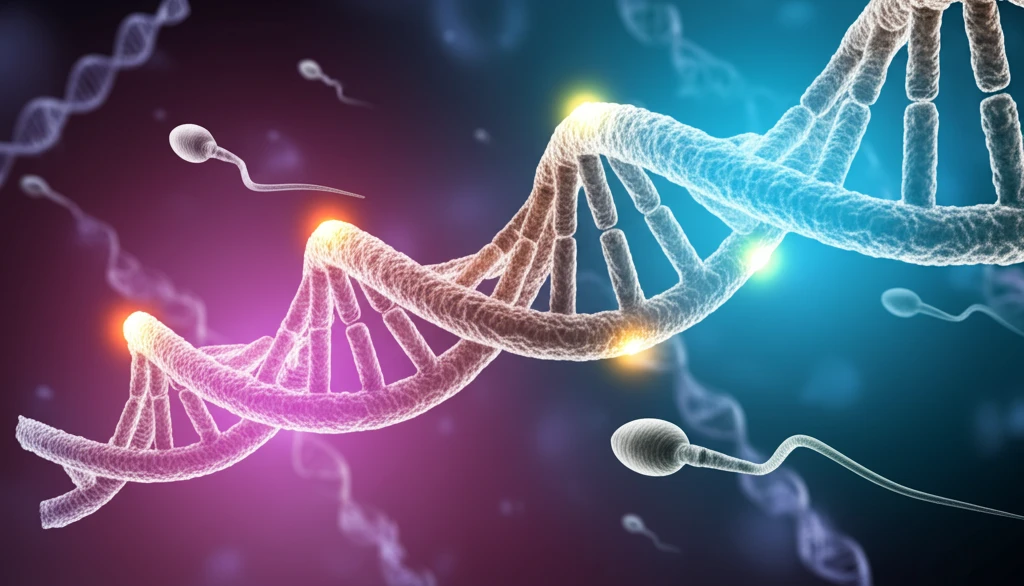
Unlocking Male Fertility: How Chromosome Silencing Holds the Key
"New research sheds light on the critical role of the SETDB1 protein in meiotic sex chromosome inactivation (MSCI) and its implications for understanding and treating male infertility."
For couples hoping to conceive, fertility is often a central concern. While both partners contribute, male infertility accounts for a significant portion of these challenges. Scientists are constantly working to understand the complex processes that govern sperm development, and new research is providing crucial insights into the genetic mechanisms at play.
A recent study published in Developmental Cell has illuminated the role of a specific protein, SETDB1, in a process called meiotic sex chromosome inactivation (MSCI). MSCI is a vital event during sperm production where the X and Y chromosomes are temporarily silenced to ensure proper genetic segregation. The research, led by Takayuki Hirota and James M.A. Turner, reveals how SETDB1 acts as a critical link in the DNA damage response pathway, ensuring that this silencing occurs correctly.
This breakthrough not only deepens our understanding of the fundamental biology of sperm development, but also opens potential new avenues for diagnosing and potentially treating some forms of male infertility. Let’s break down this complex research into accessible terms and explore what it could mean for future fertility treatments.
SETDB1: The Conductor of Chromosome Silencing

During meiosis, the specialized cell division that creates sperm, chromosomes must pair up and exchange genetic material to ensure diversity. However, if chromosomes are damaged or fail to pair correctly, a surveillance mechanism kicks in to silence these problematic regions. In males, this process is particularly important for the X and Y chromosomes, which have different structures and need to be carefully managed.
- SETDB1's Role: SETDB1 ensures timely expression of meiotic and post-meiotic genes.
- DDR Network: The meiotic DNA Damage Response (DDR) network recruits SETDB1 to the XY pair, where it induces H3K9me3.
- Consequences of Deletion: SETDB1 deletion perturbs meiotic sex chromosome remodeling and silencing.
- Essential for Meiosis: SETDB1 is essential for male mouse meiosis.
What Does This Mean for Future Treatments?
While this research was conducted in mice, the fundamental processes of meiosis and chromosome silencing are conserved across mammals, including humans. This suggests that SETDB1 may play a similar role in human sperm development. Further research is needed to confirm this, but the findings open exciting possibilities for future diagnostic and therapeutic interventions. Identifying men with SETDB1 deficiencies could provide a clearer diagnosis for some cases of unexplained infertility. In the future, therapies aimed at boosting SETDB1 function or correcting downstream consequences of its deficiency could potentially improve sperm production and male fertility. As research continues, this tiny protein may unlock significant advances in reproductive medicine.
